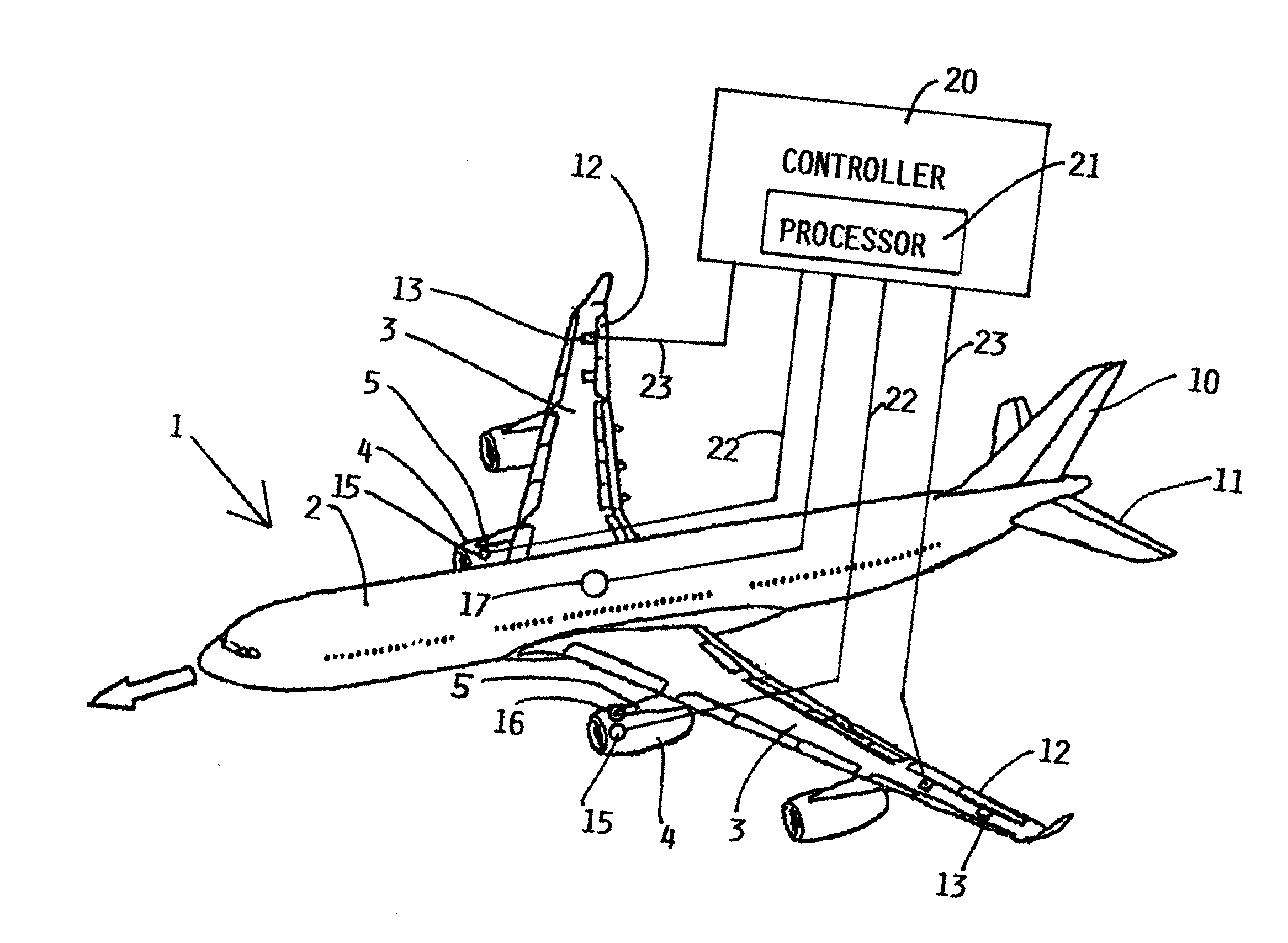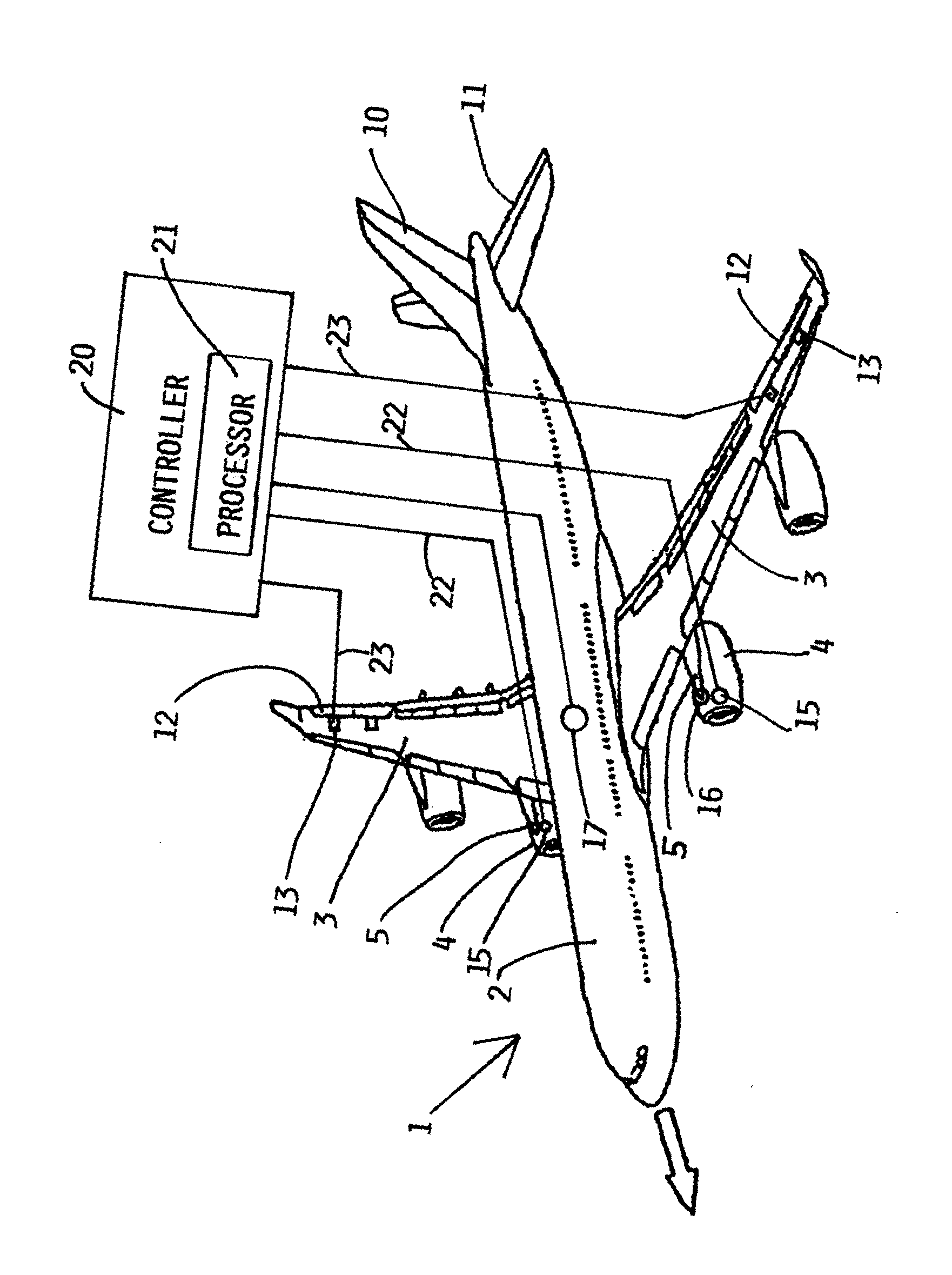Method and system for reducing engine induced vibration amplitudes in an aircraft fuselage
a technology of engine and fuselage, which is applied in the direction of active noise reduction system, rotocraft, power plant arrangement/mounting, etc., can solve the problems of significantly affecting (i.e. impairing or detracting from) the overall comfort of passengers in the aircraft, reducing effectiveness, and reducing passenger comfort. , to achieve the effect of improving the damping of elastic oscillating movement of the aircraft fuselage, improving flight comfort, and improving passenger comfor
- Summary
- Abstract
- Description
- Claims
- Application Information
AI Technical Summary
Benefits of technology
Problems solved by technology
Method used
Image
Examples
Embodiment Construction
[0016] The single drawing FIGURE schematically shows an aircraft 1, including a fuselage 2, and two wings 3 protruding to the right and left sides of the fuselage 2. The aircraft 1 further includes various control surfaces such as a rudder 10, elevators 11, as well as ailerons 12 provided on the trailing edges of the wings 3. The ailerons 12 are actuated and controlled with respect to their deflection position by any conventionally known arrangement of actuators 13. The aircraft 1 further includes engines 4, such as any typical jet turbine engines, mounted by pylons 5 onto the wings 3. The just-described general components of the aircraft 1 may have any conventionally known design, construction, arrangement and operation. The special features of the inventive system in the aircraft 1 will be described next.
[0017] The inventive system includes a controller 20 incorporating a computer processor 21, which may be embodied in the existing flight control computer of the aircraft 1. The co...
PUM
 Login to View More
Login to View More Abstract
Description
Claims
Application Information
 Login to View More
Login to View More - R&D
- Intellectual Property
- Life Sciences
- Materials
- Tech Scout
- Unparalleled Data Quality
- Higher Quality Content
- 60% Fewer Hallucinations
Browse by: Latest US Patents, China's latest patents, Technical Efficacy Thesaurus, Application Domain, Technology Topic, Popular Technical Reports.
© 2025 PatSnap. All rights reserved.Legal|Privacy policy|Modern Slavery Act Transparency Statement|Sitemap|About US| Contact US: help@patsnap.com


